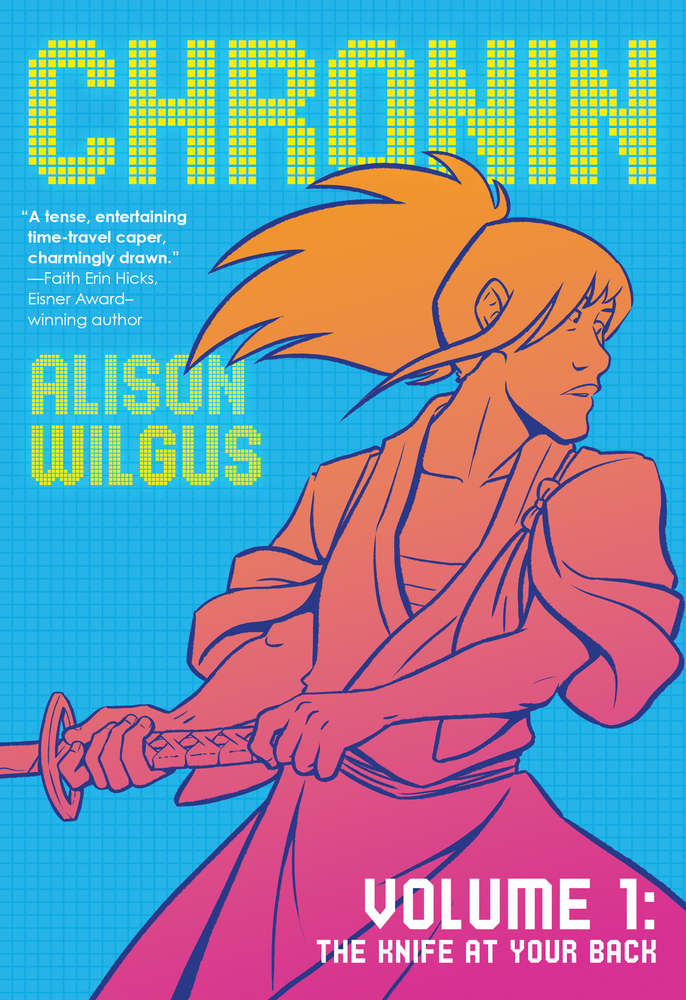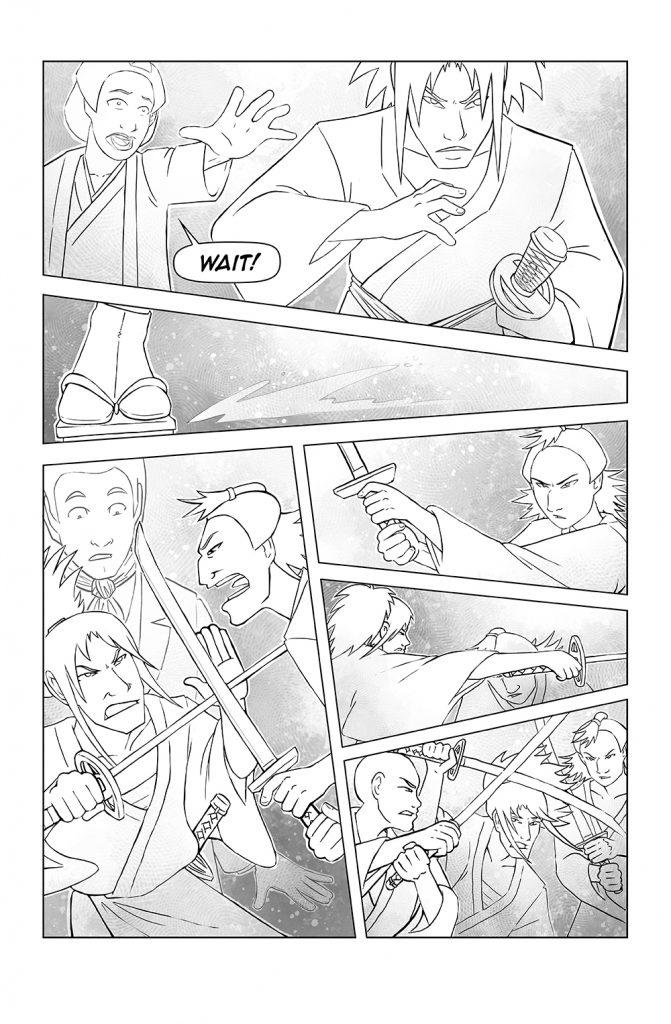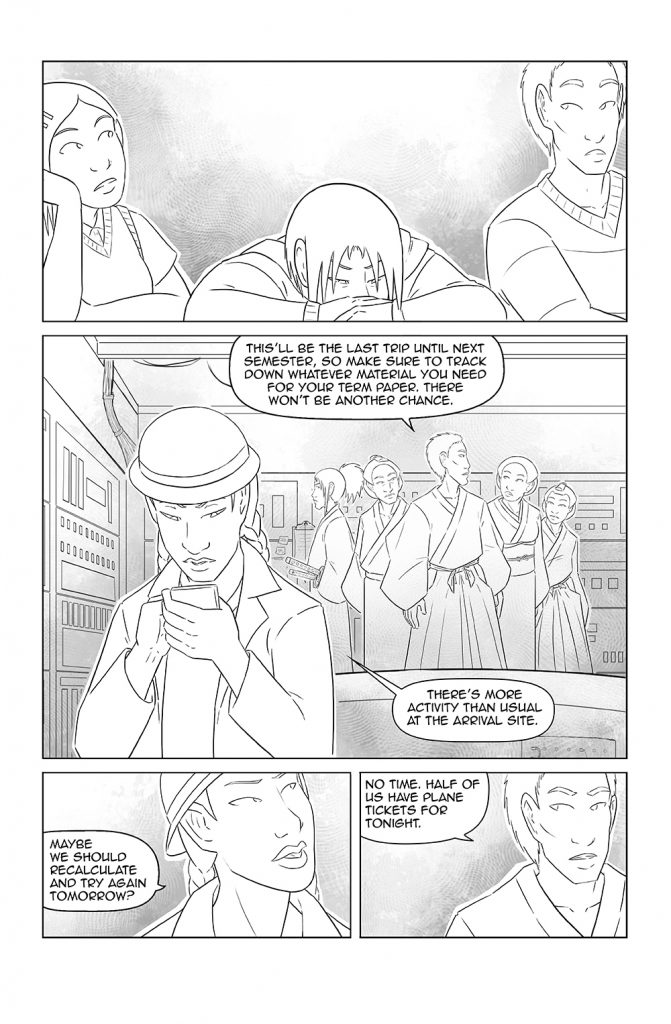I recently had the chance to borrow a copy of Chronin #1: The Knife at Your Back from my local library. With its neon blue cover, it sticks out, a testament to some smart cover design. In this first part of a two-volume series from Tor Books, veteran cartoonist Alison Wilgus asks a question that is time-worn in science fiction; what happens when time travelers get trapped in the past? Can the past be changed, or is trying to change time like throwing a pebble into a river? Wilgus’ answer comes from a specific time and place that has generally been ignored by Western time-travel stories; 1860s Japan, at the fall of the Tokugawa shogunate.
After the development of time travel in 2048, Mirai Yoshida enrolls in a Time Travel anthropology program at a prestigious university, and starts going back in time with a group of fellow students. After a few trips, Mirai is stranded in Edo (current-day Tokyo) after most of the time travel retinue is murdered. Mirai must now get back a special time travel beacon to go home, but must rely on new skills and friendships made in the past to get back to the future.
Wilgus has a knack dialogue and character interactions, and her cartooning is charmingly drawn. The writing is a clear strength of the book. Like much of Wilgus’ previous work, Chronin #1: The Knife at Your Back is a book that is socially minded. This time, Wilgus uses the backdrop of pre-modern Japan as a way to explore class and gender issues of past and contemporary Japanese society.
In my review of Apartment Hunting, I noted that the mini was a full color piece, which complemented Wilgus’ thin line nicely. Sadly, Chronin #1: The Knife at Your Back is black and white, and struggles to match the visual clarity of her previous work. Due to a lack of detailed shading and a hazy, almost bubbly tone that is applied over most panels, the characters of Chronin #1: The Knife at Your Back feel like paper cut-outs superimposed on a foggy background. Much of the delicate linework of Wilgus’ backgrounds are obscured by this fog effect. It left me feeling a bit disoriented, and it was hard to follow action scenes if you weren’t paying close attention. The end result was a captivating cast of characters in an interesting setting, but an unsatisfying reading experience overall.
Sequential State is made possible in part by user subscriptions; you subscribe to the site on Patreon for as little as a dollar a month, and in return, you get additional content; it’s that simple. Your support helps pay cartoonists for illustration work, and helps keep Sequential State independent and ad-free. And if you’re not into monthly subscriptions, you can also now donate to the site on Ko-Fi.com. Thanks!



